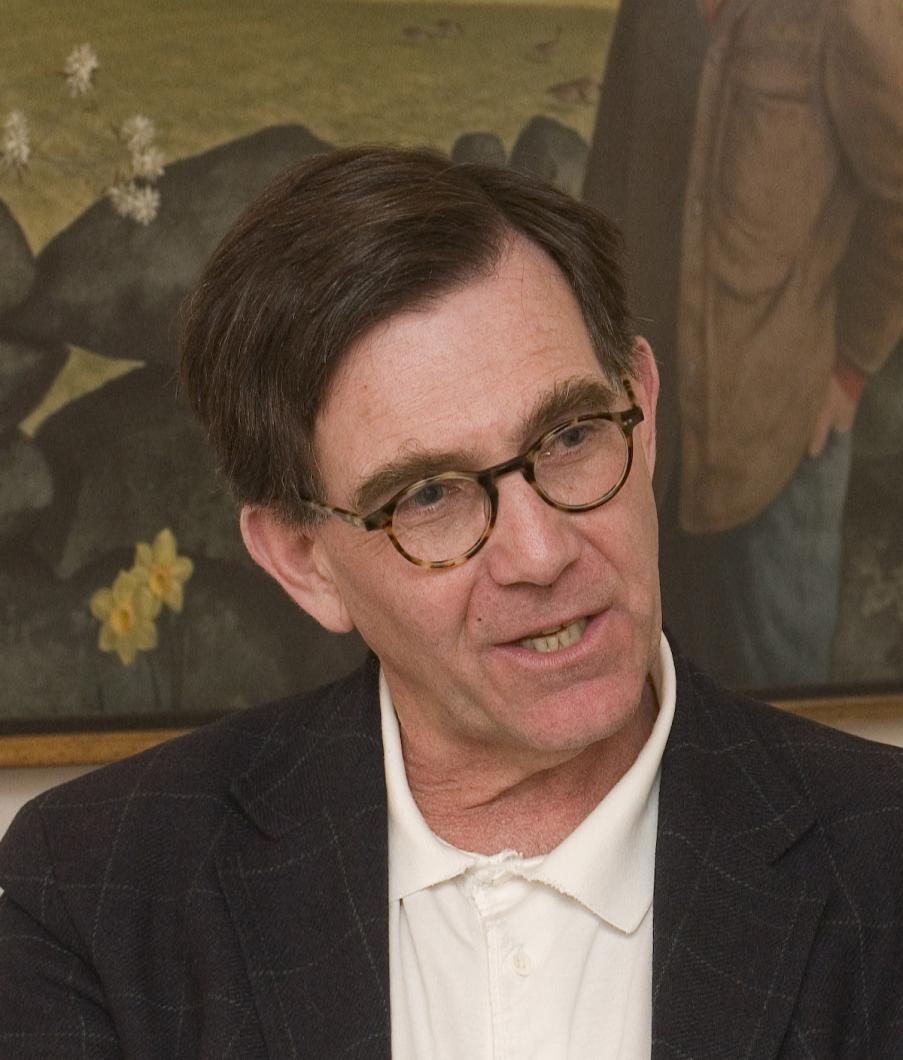As Island residents go kicking and screaming into the future, the Martha’s Vineyard Museum has always served as a refuge in turbulent times. Here the centuries mingle and Island life never changes. In one room, romantic maritime tableaus etched by idling seamen in the jawbones of sperm whales recall the glory of Martha’s Vineyard’s seafaring past, while in the next gallery the indelible 20th century folk art of Stanley Murphy revels in the workaday triumphs of a rural Island community. To amble around the museum is to wander through time: 700-year-old clay pots, fighter pilot pressure suits and turn-of-the-century portraits of Ocean Park are all on offer.
And as the new museum director, David Nathans is the custodian of these Vineyard keepsakes as well as over 100,000 historical manuscripts and nearly 30,000 other Island artifacts.
“The people who come to the Vineyard, or who live here, clearly have an innate interest in history,” Mr. Nathans said in an interview with the Gazette this week. “How could they not? It’s all around them.”
That history, however, is becoming increasingly difficult to catalogue and maintain in the cramped quarters on School street.
Mr. Nathans, the former founder of a consulting firm focused on the marketing and development of museums and other cultural organizations, joined the museum in September during an especially trying time in its history. With the recent resignation of Keith Gorman as director amid a moribund $35 million fund-raising effort, the museum had begun to appear rudderless.
As director of his alma mater’s flagship museum, the Emerson Gallery at Hamilton College, Mr. Nathans helped turn around an institution that was stumbling toward irrelevance. The Martha’s Vineyard Museum sees in him a sensible fit for an organization that has had trouble raising money and explaining its purpose to a broader public.
“It would seem to me that if I have a whole bunch of people on this Island who care about history and I’ve got an institution whose function is to preserve it and present it and share those stories about it,” he said, “well, that would seem to me a natural success.”
The key driver of that success, in his opinion, is programming. By functioning less as a stodgy historical society that caters to researchers and history buffs and more as an institution that both entertains and informs the general public, Mr. Nathans wants the museum to elevate its profile in the community.
“We need to demonstrate to all of our public — the year-round residents, the seasonal residents and tourists — the richness of what we have, the value of the stories that it can tell and the history that it preserves,” he said.
To that end, upcoming programs include an exhibit chronicling the Vineyard’s experience of the California gold rush, which saw many of her sons bolt westward lured by the promise of quick riches (but met more often with a hardscrabble existence), an exhibit on the voyages of Laura Jernegan, the little girl who saw the world on a whaling expedition, and for next year’s Civil War sesquicentennial the museum plans to revisit its vast collection.
As the museum presses on, however, its physical needs have not diminished. “When the museum did some strategic planning in 2001 and 2002 it was clear that we were running out of space — in fact, we had already run out of space,” Mr. Nathans said. In response, the institution undertook an ambitious $35 million capital campaign to relocate its campus to West Tisbury where it would be able to expand and improve collection storage and exhibition space as well as ameliorate the cramped and cluttered lifestyle of its curators and researchers.
That campaign ultimately foundered in a perfect storm that included competition from several other Island fund-raising campaigns and a crashing economy, although Mr. Nathans perfers to think of things as “in a dormant stage.” The immediate goal for him is not to begin raising money again, but to reestablish the museum’s standing on the Island and prove just how invaluable it is as the sole repository of the Vineyard’s cultural heritage.
“We have to prove to people that we deserve their support before we can get back on track with a capital campaign,” he said
A Gazette article from 1956 illustrates that the museum has faced similar challenges throughout its history. “The museum merits attention not because it is new,” it reads, “but because there are many Vineyard visitors who are either unaware of its existence or bypass it expecting must and dust.”
Since moving to the Vineyard in the fall Mr. Nathans has been enchanted by the Island’s natural beauty but more so by its intellectual vibrancy, which he believes could be uniquely served by the museum.
“There are the standard things you hear about the Vineyard, about the diversity of the people,” he said. “But it’s not just the diversity of the racial and ethnic groups. What really comes through to me is the intellectual diversity and interest of the population. I’ve come to know a few tradespeople and they’re college graduates who are incredibly well-read and well-spoken. I don’t think you would find that in many New England towns.”
Mr. Nathans understands the museum’s dual role as a high-minded institution that serves to educate the public as well as that of an organization that needs to make money. As a history buff he is a voracious consumer of weighty political biographies, but as a marketing man he has a fondness for tag lines.
“I like the House of Pancakes tagline, Come hungry, leave happy,” he said. “I think it should be our tag line: Come hungry for history, leave happy.”







Comments
Comment policy »